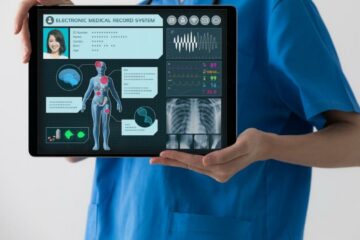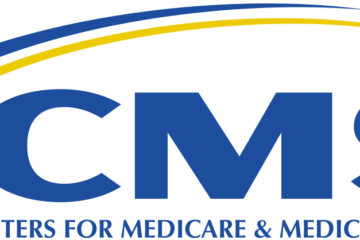Noridian ICD10 Denials
Noridian Medicare Jurisdiction E, California, Nevada, American Samoa, Guam and Northern Mariana Islands is improperly denying Chiropractic claims with MM900 to M9905.
The error is on their end and they are making correction and no action is needed on the provider end at this time. Noridian is indicating they will be making the corrections and paying the improperly denied claims. Below is the link to the Noridian explanation
https://med.noridianmedicare.com/web/jeb/fees-news/alerts-details/-/view/10525/chiropractic-claims-containing-payable-primary-diagnoses-m99-01-m99-05-are-being-denied
ICD10 Update
The scheduled date for ICD10 implementation remains October 1, 2015. These codes will be used for dates of service 10-1-2015 and after. Visits before this date will continue to use ICD9 even if the claim is sent after October 1, 2015. Note all HIPAA entities are required to change which means workersâ compensation and personal injury are exempt. It is likely these will also change but it is possible that a state workersâ compensation system may maintain use of ICD9. And it is possible also for personal injury carriers also.
The Network is monitoring which carriers and states will or will not adopt for personal injury and workersâ compensation. However all other carriers including Medicare and health insurance must adopt ICD10.
Coding of strain and sprains and proper use of A, D and S extensions in ICD10
The coding for strains and sprains is more specific in ICD10 as there are separate codes for strains and sprains while ICD9 uses one code to designate strain or sprain.
For instance for cervical spine, 847.0 is used in ICD9 to indicate a strain and sprain while ICD10 has separate codes for each. The base code for cervical strain is S13.4 and cervical sprain is S16.1. However, to be complete the codes have to be to 7 characters in length with the 7th character and A, D, or S.
Therefore the specific codes are as follows;
S13.4XXA sprain of cervical spine, initial encounter
S13.4XXD sprain of cervical spine, subsequent encounter
S13.4XXS sprain of cervical spine, sequelae
S16.1XXA strain of cervical spine, initial encounter
S16.1XXD strain of cervical spine, subsequent encounter
S16.1XXS strain of cervical spine, sequelae
At first glance it may appear obvious and logical when you identify the coding in this format is that the initial encounter is for the first visit and subsequent encounter is for the second and âsubsequentâ visits. However, that assumption is incorrect and without a full understanding of the definitions of the A and D extensions may lead to improper coding.
The term âinitial encounterâ is somewhat misleading as it actually refers to the period of time when the patient is receiving active treatment for the condition. Chiropractic treatment (physical medicine services et al) are considered active treatment as there is âactive careâ for the condition. Therefore the A extension S13.4XXA for cervical sprain and S16.1XXA would be the code to use for all visits when the patient is under active care.
Subsequent encounter is the visit(s) after the active phase of treatment. For instance a medical provider refers a patient to a chiropractor for care and once care is completed with the chiropractor and the patient is being âcheckedâ out by the medical provider that would be the subsequent encounter.
The source of these definitions ICD10 CM Documentation A How-To Guide for Coders, Physicians and HealthCare Facilities 2014 pages 341- 342 Chapter 19.
Medicare Local Coverage Determination LCD for chiropractic, specifically Noridian, lists the strain and sprain codes for spine with only the A extension, as it refers to care that is active therapy (think AT modifier for CMT as required by Medicare). Use of codes with a D extension is not payable by Noridian Medicare and this diagnosis indicates the patient is not under active (corrective care).
National Government Services another multistate Medicare intermediary also lists only the strain and sprain codes with the A extensions as well but also codes with the S extension for sequelae. Sequela refers to the complications or conditions that arise as a direct result of an injury (residual effects). This residual effect can be pain, scar tissue, loss of range of motion etc. Generally sequelae code such as S13.4XXS is coded secondary to the sequelae itself. For instance residual pain in the cervical spine following a sprain would be coded in this manner.
M54.2 cervical pain as primary and S13.4XXS indicating the pain is the sequelae of a cervical sprain.
While it is the providerâs duty to choose the most appropriate code the provider must also have a correct understanding of the code meanings. For strain and sprain codes in ICD10 the A extension does indicate initial encounter but is also for all dates of service when there is active care. Therefore the most likely code a chiropractic provider would use, unless the care is no longer active, corrective, or acute would be the A extension.
For easy conversion and code look up take a look at this link and play the video
www.digital.hjrossscompany.com for chiropractic
www.digital.aacinfonetwork.com for acupuncture
Acupuncture Timed Service Documentation Requirements
The 15 minute increment of time is defined as personal one-on-one contact with the patient. This means that the physician acupuncturist is in the room with the patient, is actively performing a medically necessary activity that is a component of acupuncture or electro acupuncture. The time that the needles are retained is specifically excluded for the purpose of determining time and consequently from reimbursement. 8 Minute Rule for Timed Codes â One Service
For services billed in 15-minute units, count the minutes of skilled treatment provided. Only direct, face-to-face time with the patient is considered for timed codes. 8 minute time rule for timed service ⢠7 minutes or less of a single service is not billable. ⢠8 minutes or more of a single service is billable as 1 unit or an additional unit if the prior units were each furnished for a full 15 minutes: ⢠8 â 22 minutes = 1 unit ⢠23 â 37 minutes = 2 units ⢠38 â 52 minutes = 3 units ⢠53 â 67 minutes = 4 units
Be sure to document both the face-to-face time and the separate and subsequent sets. Carriers will question the amount of acupuncture sets that can be applied on one 8 hour day by one practitioner which would be approximately 32 which is 4 sets per hour due to face-to-face requirement for billing.
Optum Health (United Health Care) Per Visit Payment for Chiropractic
On 10-1-2015 Optum will roll out a per visit fee schedule for chiropractic providers in California, Oklahoma, Texas and Wisconsin. This means that there will not be a âfee for serviceâ payment but a fee for visit. Included will be all services done under the chiropractors scope of practice. Some DME supplies will be covered separately.
The fee will be $60.00 and will include exam, x-ray, manipulation, PM&R, etc., regardless of first or subsequent visits.
This move is stated to create administrative simplification, reduce utilization management requirements and align payment for quality emphasis. They state under fee-for-service there is a potential for overuse of services by increasing the intensity of care. While a per visit payment conversely are an âincentive to produce care more efficiently.â
75% of Optum Provider Network is on a per diem reimbursement schedule including all physical therapists. This move should reduce the need for authorization even though Optum will retain a 3 tier level of providers most will be in Tier 1 advantage which will require any UR process. Tier 2 will require minimal UR according to Optum and Tier 3 will maintain a comprehensive UR process. As with all carriers who implement a tier system high visit utilization on regular basis will lead to a lower tier and more scrutiny of services. Other states to follow in quarter 4 GA, KY, OH, CO, IL, IN, & KY. In quarter 1 for 2016 AR, MI, RI, UT, OK, AL, DC, DE, IA, MD, VA, WI, LA, MS, NM, NV, & TN. Quarter 2 for 2016 ID, NC, NH, SC, VT, AZ, & PA. And in quarter 3 for 2016 CT, NJ, & NY.
Medicare Fees July 1, 2015
Medicare fees for chiropractic had small increase about 1% in July. Not all states have published the current allowances however. This averages an increase of 20 to 40 cents per CMT code on average.
VA Benefits for Chiropractic and Acupuncture
The VA is now paying for benefits for chiropractic and acupuncture. However care must be authorized or referred directly by the veteranâs primary medical provider. The services are administered with TriWest who will provide the authorization. Fees are paid at 85% of Medicare or if no Medicare fee is available 85% of the rate of 60% of the VA Medical Center prevailing rate.
Affordable Care Act
Poll finds many insured unaware of special Affordable Care Act Options â We are not surprised as our seminar poll finds most providers are also unaware.
Under section 2706 of the affordable care there is to be no discrimination of services for a provider acting within their scope of practice. Meaning even if a plan has no specific chiropractic or acupuncture benefits or limits them but also have unlimited physical medicine services they cannot limit the payment of those services that are within the scope of practice.
The Affordable Care Act’s Pioneer program, which seeks efficiencies by managing care for patients with chronic diseases, saved 1.2% on Medicare spending in its first year, according to a paper published by the New England Journal of Medicine.
Nearly 17 million more people have health insurance since the Affordable Care Act went into effect, gaining coverage through public marketplaces, employers and Medicaid, according to a Rand Corp. study. That includes 22.8 million newly insured people and 5.9 million who lost coverage. About 8 million people gained work-based coverage as the economy added about 4.4 million jobs.
Report: Integrative medicine helps reduce chronic pain
A six-month study of 369 patients showed integrative medicine helped patients be more engaged and reduced stress and depression. Patients under treatment for chronic pain reported major decreases in severity and a 33% reduction in how much the pain kept them from participating in normal activities. The research was presented in a report published by the Bravewell Collaborative. http://www.huffingtonpost.com/2015/05/04/integrative-medicine-_n_7190704.html?utm_hp_ref=healthy-living&ir=Healthy+Living
Acupuncture may alleviate pain in children after tonsil surgery
An Israeli study found that children ages 3 to 12 who underwent tonsillectomy experienced less pain and consumed fewer analgesic drugs after receiving acupuncture, compared with those who were only given a conventional analgesic treatment. The findings, published in the journal Pediatric Anesthesia, also revealed that acupuncture was “well tolerated” by children and their parents and showed no adverse effects, researchers said. http://www.physiciansbriefing.com/Article.asp?AID=699056
How to Handle Negative On-Line Reviews
Here are seven tips for responding online to negative reviews:
1. Follow HIPAA. The medical profession is uniquely hampered in its ability to respond to online reviews because of patient privacy laws. You simply cannot disclose any protected health information in your response; because the patient has not given you consent to do so. The fact that the patient may have disclosed private information in his initial review does not give you permission to do the same in response. Given the seriousness of this concern, it is always better to err on the side of saying too little than too much. The fines associated with HIPAA or state privacy law violations may deter you from responding at all.
2. Be careful responding to anonymous reviews. The anonymity of some online reviews can make it difficult â or impossible â to respond. The review websites will not disclose the reviewer’s true identity to you. If you do not know with absolute certainty who posted the negative review, then do not respond with any remarks specific to that patient. You do not want to risk responding to the wrong patient.
3. Keep the response short and polite. There’s no reason to post a lengthy response. It will only look defensive to other patients. One way to promote a polite review is to avoid responding in anger. If you read a negative review, go ahead and draft your “dream” response. Then wait one day or two days, then re-read your draft response before posting it. It is also a good idea to enlist a trusted friend or family member to review your response and provide feedback about how the review sounds to a disinterested observer.
4. Show a commitment to improvement. Although review websites frustrate doctors to no end, keep in mind that they are one of the few methods by which you can get honest feedback. Your response to negative reviews will be most effective if they demonstrate that you want to improve your practice in response to fair criticism.
5. Invite the patient to contact you off-line. In your response, you can invite the patient to call you to discuss the problem and devise a solution together. It may not work with this particular patient, but it demonstrates to anyone who reads the negative review that you are willing to formulate a reasonable solution to patient concerns.
6. Do not defame anyone in your response. I once represented a client in the construction industry who had been defamed on Yelp. He had completed several small construction projects at a former schoolmate’s home but she refused to pay him anything. Then she posted negative reviews on Yelp, accusing him of stealing jewelry and trespassing on her property. He responded to her review online and stated “If theft was made, it was her stealing money and services from me,” among other explanations of what had happened. Although at trial we prevailed on our defamation claims against the customer, my client was also found to have defamed his customer in his online response. If you do choose to post a reply, keep this risk in mind.
7. Avoid apologies in some situations. There are times when a simple apology works well. For example, if the patient complains that your office always runs 15 minutes behind schedule, you could apologize and explain that because you try not to rush patients during examinations, sometimes patients have short wait times. However, there are times when you have to avoid an apology. For example, if the review accuses you of malpractice or other wrongdoing, an apology may not be the right approach given the possible legal liabilities at play. Excerpted from Physicianspractice.com
Omega-3 seen to reduce behavioral problems in children
A study on how environment and biology affect children has found that diet, specifically the presence of omega-3 fatty acids, can decrease antisocial and criminal behavior problems over time. http://www.upi.com/Health_News/2015/05/15/Omega-3-seen-to-reduce-behavioral-problems-in-children/7361431719680/


